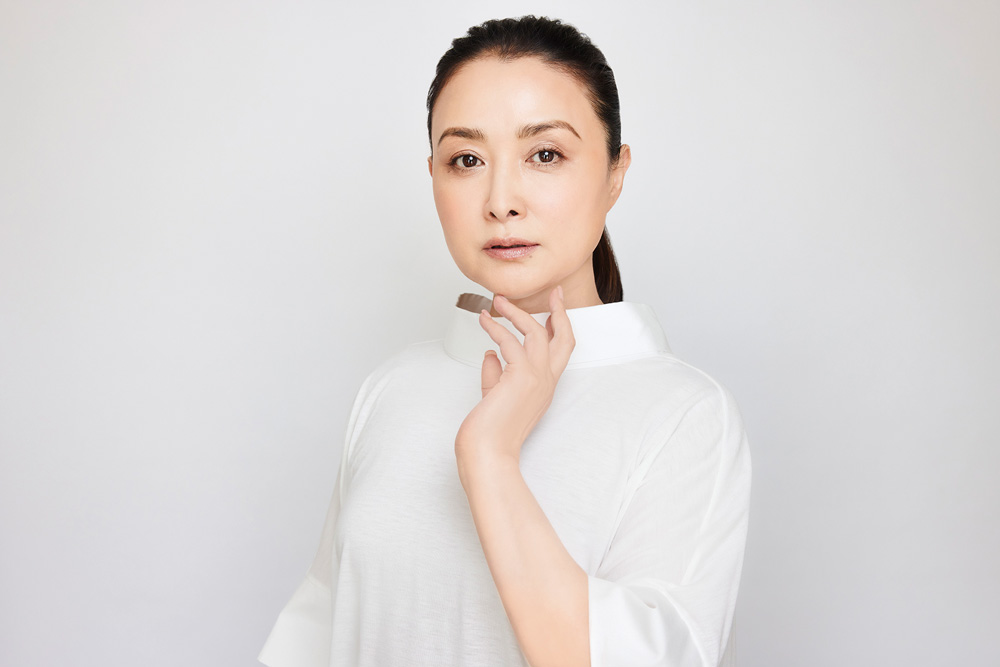
Sayuri Kokusho
Not only is Sayuri Kokusho, a renowned actress and talent from Kagoshima, active on television, but she has also recently taken on the challenge of writing novels. Her persuasive words and the wealth of information she shares about her love for Kagoshima on variety shows always amaze me. I asked her about what she finds interesting about Kagoshima lately.
Going to Kagoshima City was quite special back then. Riding the ferry was thrilling and felt like stepping into an unknown town. I was involved in track and field from junior high school. When there were competitions at the track and field stadium in Kamoike, we would drive from Kanoya to Tarumizu Port with my teacher or father, and then take the ferry to the stadium in Kagoshima City. I felt a sense of duty representing not just my school but Kanoya City as well, heading to Kagoshima City with big dreams.
Because of track and field, I ended up attending high school in Kagoshima City. During high school, I lived in a dorm and practiced extensively at the Kamoike Track and Field Stadium, which remains a memorable place for me.
Actually, when I first entered the entertainment industry, there was a program called the Record Company Sports Festival, and I represented CBS Sony’s record company. My performance there led to my introduction to “Yuyake Nyan Nyan.” If it weren’t for track and field, I might not be where I am today!
I have many friends and classmates living in places like Kirishima and Kanoya, so I often travel by ferry when I return to Kagoshima. The view of Sakurajima from the ferry is breathtaking. Of course, the udon you eat on the ferry is also delicious. The taste of Kagoshima’s dashi is different from what you find in Kanto or Kansai. It’s the moment I feel like I’m back in Kagoshima.
Recently, a friend suggested we go on a power spot tour, so I started exploring local places. I first visited places like Aoi Shrine (Kanoya City), Takaya Shrine (Kirishima City), and Kawai Shrine (Satsumasendai City). Since then, I’ve felt like my surroundings have started to come together, so when I visited places like Hiroshima and Shikoku, I also consciously visited power spots.
Whenever I return to Kagoshima, I enjoy small trips with friends, visiting shrines and power spots, and then going to eat somen noodles or stopping at roadside stations. It’s always fun.
One place I often go with my friends from Kanoya is “Warajiya,” a restaurant known for its delicious yakitori. It’s a cozy spot with a seat that’s always reserved for me, as the owner is a classmate. Another place is “Kohaku,” which also has karaoke but is great for a relaxed drink. I keep a bottle of shochu there, and my member number is 8 (laughs).
In my younger days, although I don’t want to phrase it that way, I was so focused on surpassing my past self from the Onyanko Club era. I was driven by insecurities about not being recognized for my acting roles or other songs beyond “Valentine Kiss.” Now, looking back, I find those concerns amusing, and if someone mentions my member number 8, I can genuinely appreciate it and say, “Thank you for remembering.”
I love alcohol, but I also really like the “yakisoba” at Yamakataya. The crispy noodles with hot, vegetable-filled sauce, with a drizzle of three-vinegar sauce from the table… I have a habit of waiting for the noodles to soften a bit before eating, as I have a sensitive tongue.
When I was a child, my parents used to take me there in my best clothes, and nowadays, I always eat “yakisoba” at a restaurant in Kagoshima Airport before heading back to Tokyo.
I also enjoy sweets. While “Mujaki” is famous for “shirokuma,” I also like the “shirokuma” from “Math Cafe” near the Saigo Takamori statue. It’s really cute and perfect for social media.
When I visit Tenmonkan, people recognize me and say, “Welcome back,” which is very encouraging.
Also, when I was younger, I struggled a lot with changing my accent to standard Japanese and faced criticism during drama recordings for my intonation. However, I still speak Kagoshima dialect with my parents, and I believe that Kagoshima is the root of my identity and what supports me. When visitors to Kagoshima are lost and locals offer help, saying things like “Where are you going?” or “Do you need any help?”—that warmth is part of Kagoshima’s charm.
With Mount Kaimon, Sakurajima, and Kirishima, you won’t have trouble finding places to visit, and no matter where you go in the prefecture, the food—whether from the sea or the mountains—is delicious.
Kagoshima is known for its black pork, black Wagyu beef, and top-quality vegetables. The black soil in Kagoshima is unique; I’ve never seen such beautiful soil. It nurtures high-quality products all around the prefecture, which is truly wonderful.
Even now, I continue to get water, soy sauce, mentsuyu, and shochu from Kagoshima. The foundation of my health and well-being is built on these things, so I believe that Kagoshima is where my roots are. I hope everyone will enjoy Kagoshima even more.
Special interview